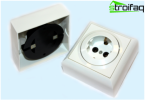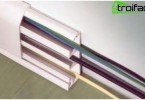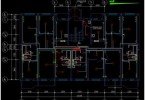Motion sensors for lighting
Today, the use of energy-saving technologies for their own needs is becoming increasingly relevant. To significantly reduce energy costs, people use special devices called motion sensors for lighting. And how to make the right choice? And what is the purpose, principle of operation of these products? We will deal with this in more detail..
Content
- Choosing a useful device
- Functional principle, functional
- Feature and customization tools
- Benefits of Motion Sensors
- Classification, scope of use
- Installation of motion sensors
Choosing a useful device
For those who want to rationally use resources, motion sensors are practically necessary attributes of everyday life, because when they are used, about 50-80% of the consumed electricity is saved.
Motion sensors are appropriate everywhere, and in corridors, and in pantries, and on stairs – where a person stays for a short time, or, for example, if his hands are busy. When an object appears in the coverage area, the light turns on automatically, if there is no movement for a specified time, the light turns off. It is also possible to set the short signal mode, which is used to turn on the acoustic device that controls the door (doorbell, bell). This simple solution will save energy, increase comfort and ensure home safety..
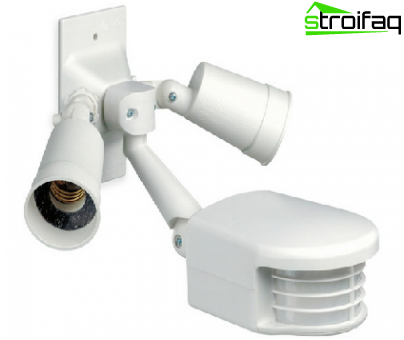
Motion sensor for street lighting
Since the benefit is obvious, many people are eager to purchase motion sensors for lighting, they just don’t know what parameters to use when choosing. There is something to ponder here:
- where exactly the device will be used – it can be a street, an open canopy, an enclosed space: a choice by the method of fastening, by the degree of protection, built-in or mounted;
- power of switched equipment. This parameter implies the image of the sensor installation – for one fluorescent lamp, for a thermos, refrigeration room. There are models with different capacities – 200V and higher, depending on these indicators, installation conditions and overall dimensions change;
- configuration of the response zone – at this stage it is important to consider the fact that the motion sensor monitors only (the main emphasis!) the visible zone. Even light constructions reduce the range, for example, a cornice, sconce, pendant lamp;
Important: you need to remember – glass is an obstacle to the passage of infrared rays, respectively, the controlled area is reduced.
- the ability to fine-tune the on / off response time. This function is most relevant for large rooms where several sensors are installed over a large area, but they do not completely cover it. It turns out that in such conditions, the actions of a person are very important – he must have time to get to the next sensor or have time to perform certain work, returning to the zone of action;
- sensor perception angle – products are available with a viewing angle of 180-360 degrees. For example, sensors with an angle of perception of 180 degrees are in most cases intended for an input-output reaction, mounted on a wall. If the installation is performed on the ceiling, this means that the device has a full viewing angle;
- the formula for the ratios of the active and passive zones is a parameter relevant for offices, lounges. Registration of people present is faster if the alternation of zones is higher.
Important: some models are tuned for human breathing.
Functional principle, functional
Motion sensors for lighting – a popular, convenient product that solves various problems. This device functions thanks to infrared radiation: a programmed signal gets onto the captured matrix.
Often, sensors work together with electrical devices, and they can also be the main ones in the alarm system and video surveillance. That is, motion sensors are used to harmlessly turn on the light in the passage zone, to ensure the safety of housing.
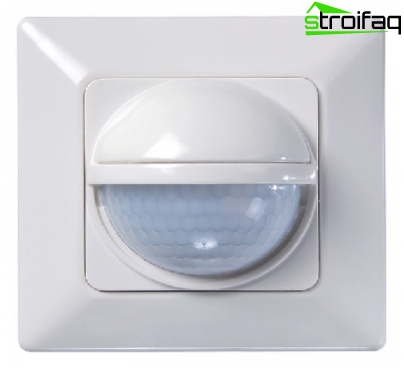
Motion sensor for lighting – convenient and functional
The sensor automatically detects movement, closes the circuit and turns on the light. The main principle of operation is continuous monitoring in the observation zone: when a moving object appears, the thermal field changes, it is higher than the ambient temperature.
Using a special lens called the Frankel lens, a signal is applied to the photocell, which causes a circuit to close. In the control zone, the sensor is triggered even with minor movements, for example, if a sitting person sways.
Important: motion sensors are configured in a unique way – they do not respond to pets, but they feel great about large objects: car, person.
Buying such a device will not hit the budget very much, and using it will bring tangible convenience: a person enters the room, the sensor turns on the light, goes out – the light turns off automatically (after a set time). In this case, you do not need to look for the switch and remember whether I forgot to turn off the light, for example, in the pantry.
Feature and customization tools
Potentiometer motion sensors are configured, there are three of them:
- time interval – sets the period during which the sensor will work. Values are set between 5 seconds and 10 minutes (depending on model). This is the simplest of all the settings – you need to evaluate how often a person appears in the detection zone and set the delay time for turning off the lighting a little more than this value (for 1-2 minutes). This is done to avoid constant on / off;
- sensitivity – the higher it is, the better the device responds to movements. If there are a lot of responses, it is desirable to reduce the sensitivity, the same applies to spontaneous switching. Basically, this parameter is configured 3 times. It is also necessary to reconfigure the sensitivity depending on the time of the year, for example, in the summer the sensor works fine, and in the winter there are failures. This is due to the reaction to warm air rising from the heater;
- Illumination level – for the correct operation of the device during daylight hours. When a movement occurs, the sensor determines the level of illumination, if it is below the threshold, the device works, if it is above, it does not work. Yes, it’s quite logical, why in the afternoon to turn on the electric light in the room.
Benefits of Motion Sensors
- compactness – installed quietly, absolutely without damage to the interior;
- savings are evident, because the light is turned on only when necessary;
- convenience for owners of private houses – sensors are installed on the porch, on stairs, in basements and pantries: moving around the house becomes very practical;
- a kind of alarm from thieves – if intruders penetrate the home, the light turns on, announcing that strangers are in the house.
Classification, scope of use
In fact, initially the motion sensors were intended to work in a security alarm system: they transmitted an alarm to the control panel. Manufacturers went further by developing models that included floodlights, street lighting, sirens, and power equipment.
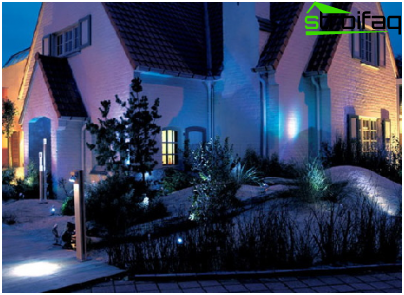
The use of motion sensors in the yard will ensure the safety of movement in the dark
Motion sensors are divided into ceiling and wall. The principle of their work is the same, they are simply selected individually, depending on the installation location. Also, at the present time, street lighting poles with sensors play a significant role in landscape design..
People understand that you need to strive to save money, so they widely use motion sensors for street lighting. They must meet the requirements and perform a number of functions:
- security lighting of plots (cottage, garden);
- aesthetic lighting of houses, parks;
- lighting of the movement of people walking along the street.
The motion sensors that are installed on the supports differ from home models – they are characterized by a large coverage angle. Range of action – 12 meters.
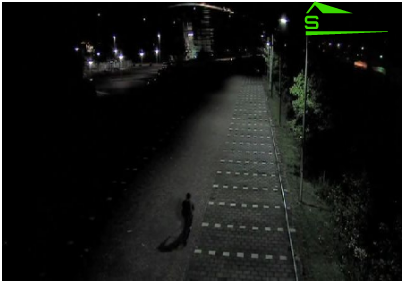
Street lighting is an economical and practical solution: the sensor transmits a signal to the lighting system only when a person approaches
Infrared motion sensors are active and passive. The first option is used to protect the perimeter of the house, fences, and the second – in alarm systems to protect wide sectors, for example, the approach to the door, security gates.
Installation of motion sensors
The technical side of installing motion sensors is not too complicated. But if there is no self-confidence, it is better to entrust this process to a professional. The cable of this device is connected to the general wiring of the house through the junction box. In addition, sensors are additionally installed that respond to changes in lighting intensity, they are also called twilight switches. This is to ensure that the sensor functions only in the dark..
There are a lot of motion sensors, each of them performs a specific task: to illuminate the pool, start the fountain pump. When installing the sensor, the size of the room, the location of windows, doors should be taken into account, since these indicators affect the correct operation of the device.
Important: the motion sensor circuit for lighting is similar to the operation principle of a conventional switch. In both cases, the electrical circuit into which the lamp is connected in series is closed or opened..
If it is necessary that, despite the lack of movement in the room, the lamp constantly works, a switch is added to the circuit, which is connected in parallel with the motion sensor. In this case, the switch duplicates the operation of the sensor, which means that you can forcefully operate light.
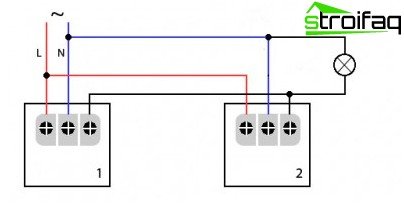
Connection of motion sensors
It is also possible that, due to the characteristics of the room, one sensor does not cover the entire area, then the connection scheme for two motion sensors and a lamp is used. When one sensor is triggered, a circuit is closed, voltage is applied to the contacts.
The rated power of the considered motion sensors is 500-700 W, this limits their use for heavy loads.
Important: in some cases you need to connect several powerful light bulbs at once (lighting the yard), then it is best to use a magnetic starter.
Motion sensors for lighting today are extremely widely used. It can be hotels, office and administrative buildings, educational institutions, gyms, parking, trade enterprises.
The appropriateness of using motion sensors is supported by arguments for energy savings, as well as convenience and practicality. The payback period depends on the total power figures of the connected lamps. But one thing is for sure, for low-quality sensors that break immediately after installation, they will constantly move away. That is, it’s better to overpay and get a great device than to buy a low-quality product.


